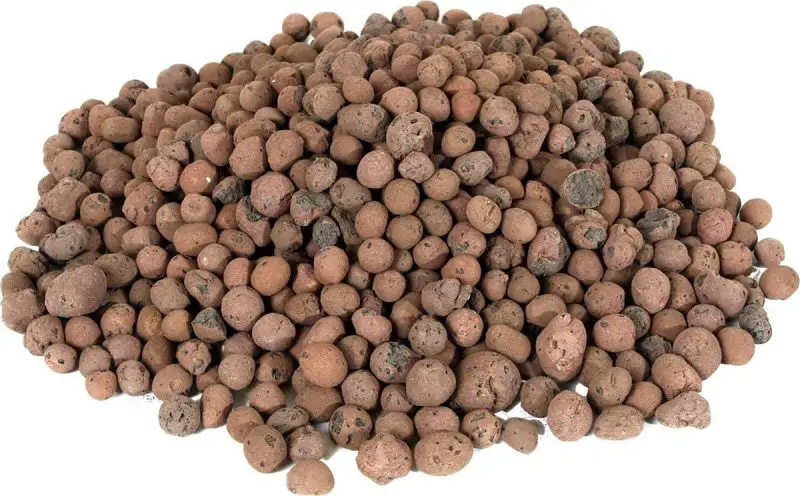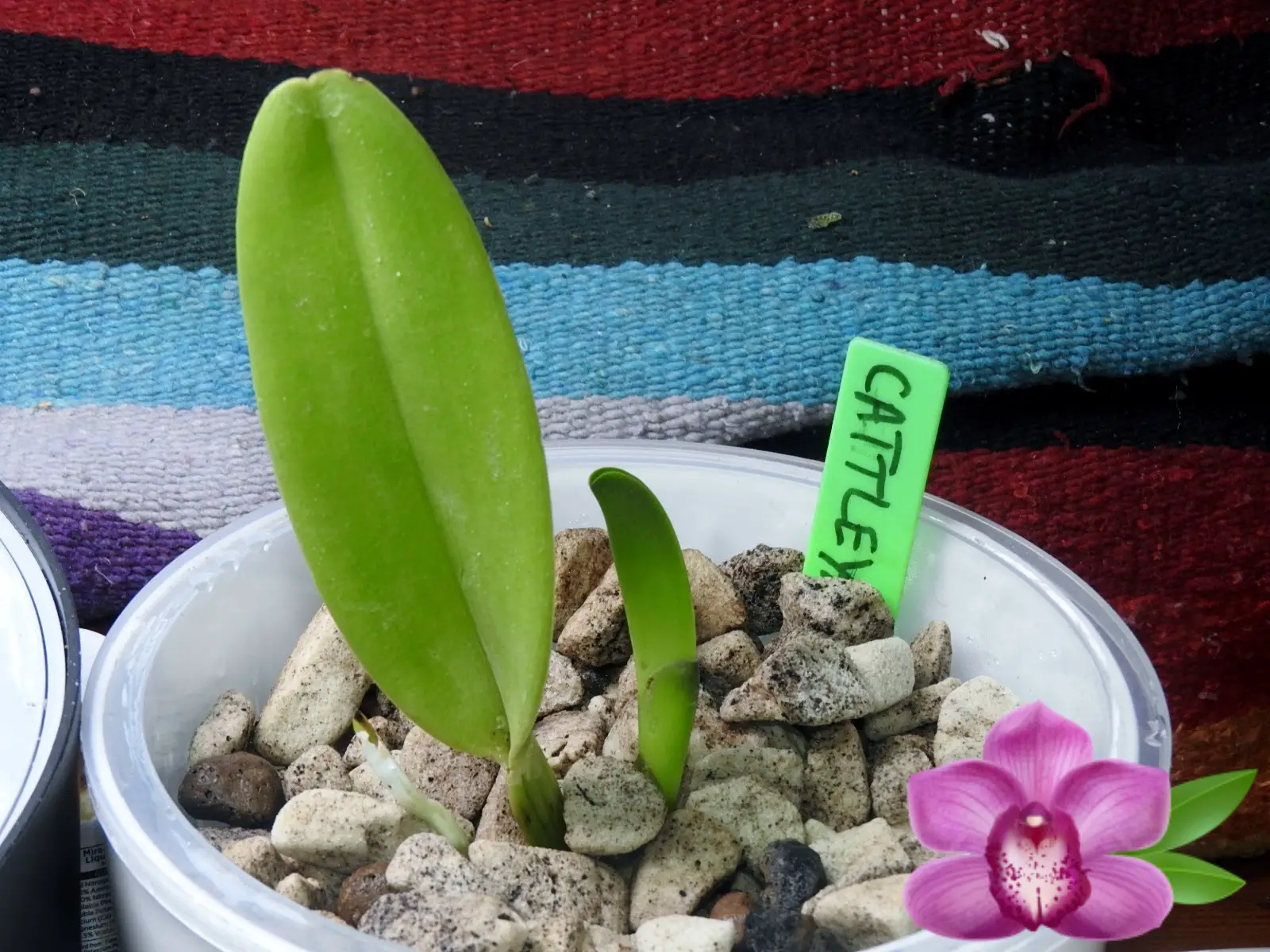 Growing orchids in LECA can help make growing orchids much easier. Orchids are a beautiful and popular choice for indoor plants, but they can be notoriously finicky.
Growing orchids in LECA can help make growing orchids much easier. Orchids are a beautiful and popular choice for indoor plants, but they can be notoriously finicky.
One of the best ways to grow orchids is in a pot filled with lightweight expanded clay aggregate, or LECA.
LECA provides excellent drainage and aeration while still holding enough moisture to keep your orchid healthy.
Some Tips On How To Grow Orchids In LECA
When potting your orchid in LECA, be sure to wash it thoroughly before use. Most LECA contains dirt and dust you want to wash out.
Always pot up your orchid in premoistened media. LECA works really well as the sole media in semi hydroponics.
Try Semi Hydro For Growing Orchids In LECA
Semi-hydroponics is a method of growing plants where the roots are not submerged in water but are instead supported by a moist substrate.
LECA pebbles are an ideal substrate for semi-hydroponic systems because they provide excellent drainage while still holding enough moisture to keep the roots healthy.
Use Self Watering Planters
 Self-watering planters are an easy and convenient way to grow plants in a semi-hydroponic system.
Self-watering planters are an easy and convenient way to grow plants in a semi-hydroponic system.
With a little care, you can successfully grow a variety of plants using this method.
Self-watering planters are an ideal choice for growing plants in a semi-hydroponic system.
They allow you to control the amount of water your plants receive and help to prevent overwatering.
There are a variety of self-watering planters available on the market.
How Self Watering Planters Work
This type of planter consists of a slotted pot that contains a wick. It sits in a slightly larger pot that acts as a reservoir.
Water wicks up into the LECA your plant is in and provides the ideal water and air ratio for your orchid.
Because many growers have trouble knowing when to water their orchids growing them in semi hydro will eliminate this problem.
Fertilizing Orchids In LECA
Fertilize your orchid every two weeks using a balanced fertilizer formulated for orchids.
You can find this type of fertilizer at your local garden center. Do not apply the fertilizer according to the package directions.
Your orchids are constantly being fed in a wicking system so they don’t need as strong of a nutrient mix.
Start out with no more than half-strength nutrients and watch your orchids to see if they need more or less food.
Wash out the reservoir every time you are going to refresh it.
Using a balanced fertilizer formulated for orchids is also a good idea. But any well-balanced mineral-based fertilizer will work.
Don’t put organic products in your reservoir. They can decompose and cause unwanted bacterial growth.
Where Should I Place My Potted Orchid?
Place your potted orchid in an area that receives bright, indirect light. Orchids do best in an east- or west-facing window.
If you do not have a bright window, you can provide artificial light by placing your orchid under a LED grow light for 12 to 14 hours per day.
Is LECA Good For Orchids?
LECA is an excellent substrate for orchids because it provides excellent drainage while still holding enough moisture to keep the roots healthy.
In order to ensure that your orchid receives the proper amount of water, you will need to monitor the water level in your reservoir.
You should empty it regularly and add fresh water and fertilizer to it every two weeks.
It is a good idea to clean the inside of your reservoir before you add more water and fertilizer.
Can I Repot My Orchid In LECA?
Yes, you can repot your orchid in LECA. Start by removing the plant from its current pot.
Gently loosen the roots and trim away any damaged or diseased roots.
Remove all existing potting material from your roots. They must be clean or this material could rot and cause root problems.
Place the plant in a new pot that is only slightly larger than the previous one. Add LECA around the roots, then water well.
Allow the plant to drain before placing it in its final location. If you’re not using a self-watering planter don’t let the plant sit in standing water.
What kind of pot should I use for my orchid?
Orchids do best in a pot that has good drainage. A pot filled with LECA will provide this.
In a self-watering planter, watering is taken care of for you.
I am using DELF 6.7″ Self-Watering Planters for my orchids. They work great and are very affordable you can buy them on Amazon here.
Some people do grow with a mix of sphagnum or coco or other organic matter. You will want to check your media regularly.
The best way to tell if your orchid needs water is to check the moisture level of the potting mix.
If it feels dry, it’s time to water. Be sure to check the moisture level of the potting mix before watering to avoid overwatering.
Should I Mist My Orchid?
Misting your orchid is a good way to increase the humidity around the plant.
Orchids prefer high humidity, so misting them on a regular basis will help to keep the leaves healthy and prevent them from drying out.
Be sure to mist the leaves, not the flowers, as too much moisture can cause the flowers to rot.
If you do choose to mist your plant, be sure to do so in the morning so that the leaves have time to dry.
Do orchids need direct sunlight?
Most orchids do not need much direct sunlight. Too much sun can actually damage them. They need bright but filtered sun to thrive.
Do orchids need to be repotted often?
If you grow orchids in LECA they will not need to be repotted often.
Unlike other potting mixes which break down over time, LECA does not break down.
So you will only need to repot orchids in LECA if they outgrow their pot. Then pot up in a slightly larger pot.
If My Orchid’s Leaves Are Turning Yellow What Does It Mean?
Yellow leaves on an orchid can indicate a number of problems, including too much sun, too little water, or a nutrient deficiency.
If the leaves are yellow and withered, this is a sign of overwatering. Allow the potting mix to dry out completely before watering again.
Be sure to check the moisture level of the potting mix before watering to avoid giving the plant too much water.
This problem can be easily solved by using a self-watering planter which gradually wicks water to the media.
It helps takes the guesswork out of watering orchids.
If the leaves are yellow and green, this can be a sign of too much sun. Move the plant to a location with brighter indirect light.
If the leaves are entirely yellow, this could be a sign of a nutrient deficiency. This is less uncommon if you are fertilizing your orchids.
Another possible reason for yellow leaves on an orchid is that the plant is not getting enough light.
Orchids need bright, indirect light in order to thrive. If your orchid is not getting enough light, you may see the leaves turn yellow.
Move the plant to a location with brighter indirect light. With proper care, your orchid should recover quickly.
On the other hand, if you start to see purple edges on your orchid leaves it means it is getting too much light.
Orchids don’t usually do well in direct sunlight. So move your plant to a location with bright but indirect light.
Signs Of Too Much Or Not Enough Light
Leaf color is a good indicator of the amount of light an orchid is getting:
- Bright green leaves indicate a happy, healthy plant.
- Dark green leaves signal that a plant is not getting enough light.
- Yellowish-green or red leaves indicate that a plant is getting too much light. https://www.almanac.com/plant/orchids
Can Orchids Grow In Water?
Yes, orchids can be grown in water. This system is called water culture or semi-water culture.
But the term is a bit misleading because they don’t stay in the water the whole time. They also have a dry cycle too.
My orchid is blooming! What do I do now?
Once your orchid blooms, you will need to carefully remove the spent flower stalk.
Cut it off at the base of the plant, being sure not to damage the leaves or any new flower buds.
With proper care, your orchid will continue to bloom for many years to come.
Final Thoughts For Growing Orchids In LECA
Orchids are a beautiful and popular choice for houseplants. But they can be finicky and difficult to care for.
One of the best ways to grow orchids is in LECA (lightweight expanded clay aggregate).
This type of potting mix doesn’t break down over time, so you won’t need to repot your orchids as often.
Plus, using LECA with self-watering planters takes the guesswork out of watering. With proper care, your orchids should thrive in LECA.
Read more: Growing Orchids In Hydroponics: Tips and Tricks
This post contains affiliate links.


